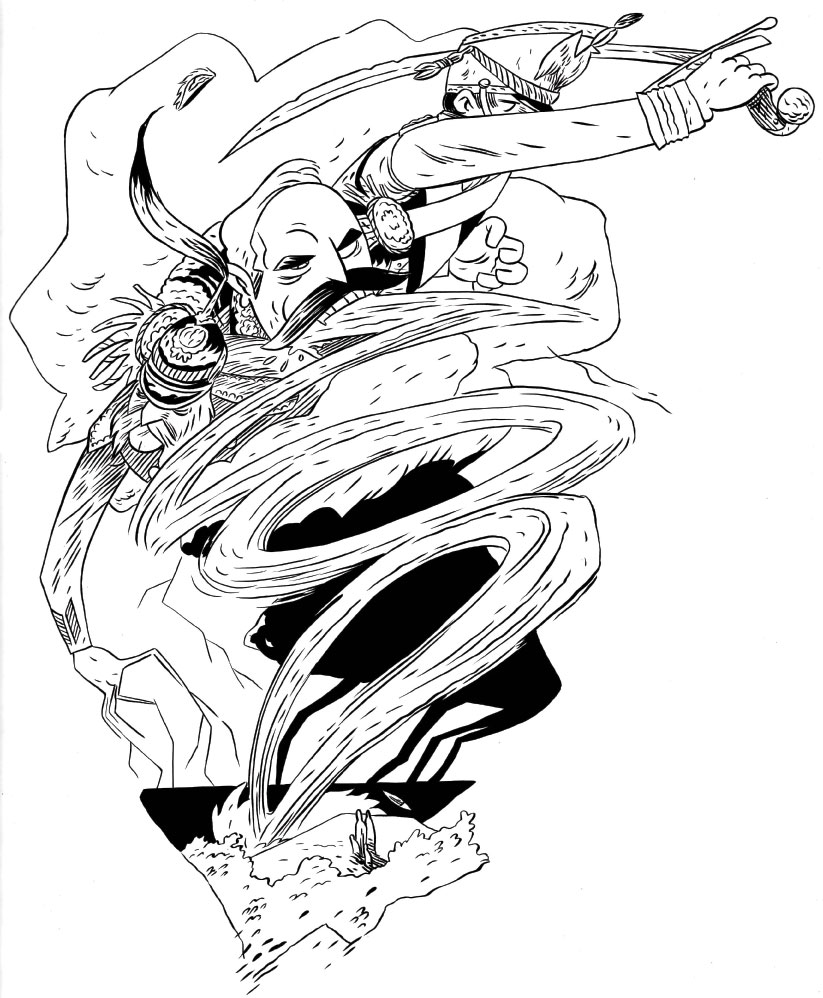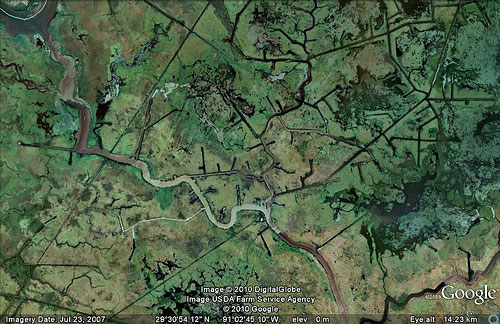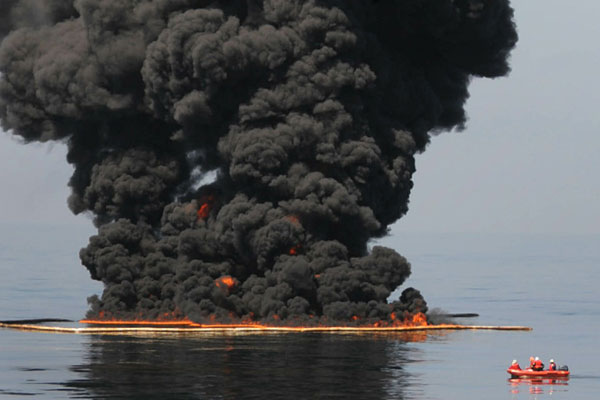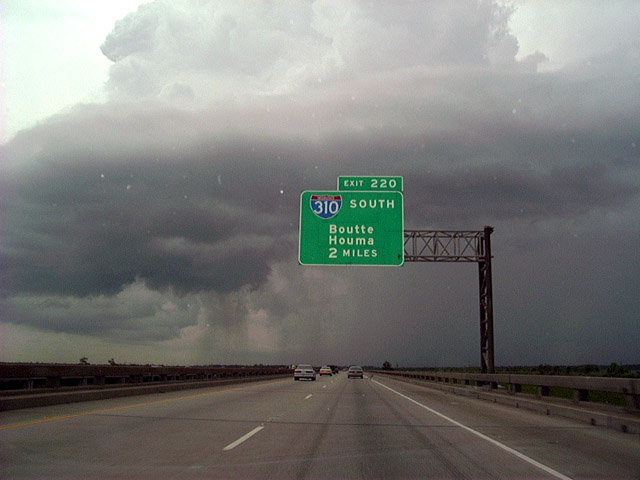by T. Mayheart Dardar
On April 30th, 2012 there is going to be a party in Louisiana, a celebration marking the state’s bicentennial: two hundred years of U.S. statehood. As the signs and banners go up and the commemorative license plates are installed, the preparations build towards the kind of party only people in Louisiana can throw.
As the date approaches I can’t help but contemplate what all of this should mean to the original people of Louisiana and to my tribe, the Houma, specifically. What should our view be of American statehood? What can we learn from the history behind this event, and how is that history relevant to us today?
Trade, Commerce, and Profit
At the end of the eighteenth century the enfant U.S. American empire set itself on a path that would come to be articulated as Manifest Destiny. As it sought to expand its economic base and political influence, the newly United States quickly set their sights on the economic jewel of the continent, New Orleans. The geographic location of the “Isle of Orleans” gave New Orleans control of the commerce of the lower Mississippi River and access to the vast markets of the Caribbean.
In 1795 the United States and Spain (who had controlled Louisiana since 1763) signed the Pinckney Treaty which gave American merchants the “right of deposit” in the city, allowing them to store their goods there for export. The treaty also gave them the right to navigate the Mississippi. With these rights in place, the fledgling American economy expanded and the wealthy business class began to consolidate its base.
 For almost three years this merchant class saw their fortunes rise to new heights, ’til 1798, when new Spanish officials suddenly slammed the door by revoking the Pinckney Treaty. Though Spain would restore the treaty in 1801, the U.S. would not soon forget the economic price paid for its inability to control New Orleans and the trade that flowed through its port.
For almost three years this merchant class saw their fortunes rise to new heights, ’til 1798, when new Spanish officials suddenly slammed the door by revoking the Pinckney Treaty. Though Spain would restore the treaty in 1801, the U.S. would not soon forget the economic price paid for its inability to control New Orleans and the trade that flowed through its port.
Thomas Jefferson saw an opportunity when he learned that Spain had transferred Louisiana back to France with the Third Treaty of San Ildefonso in 1801. He quickly sent a representative to Paris to begin negotiations with Napoleon’s government for the purchase of New Orleans. To the surprise of many, after months of talks, Napoleon offered to sell not just New Orleans but rather the entire Louisiana Territory. The process came to a close on April 30th, 1803, when the Louisiana Purchase Agreement was signed in Paris. For fifteen million dollars the United States acquired over eight hundred thousand square miles, effectively doubling the physical size of the American empire.
For the population of Louisiana the visible reality came in December when the French tri-color was lowered for the last time in the Place d’ Armes, and in its place was raised the stars and stripes.
American Indians?
The original colonial claim on Louisiana was made by France in 1682 when Rene-Robert Cavalier Sieur de La Salle, standing on the banks of the Mississippi near its mouth, expressed ownership in the name of his king. When the United States wrote a fifteen million dollar check for the same piece of real estate one hundred and twenty-one years later, there was one common denominator between the two events: nowhere in the process were the people of the land, the indigenous people of Louisiana, consulted, nor their opinions or concerns considered.
For the Houma the early territorial period brought a new colonial reality and new challenges. In 1806 and 1811 Houma chiefs met with W.C.C. Claiborne, the U.S. Territorial governor. Gifts and pleasantries were exchanged, but the Americans would make no guarantees of Houma sovereignty or land rights. Attempting to navigate the new colonial system, the Houma sought to secure their survival through a variety of efforts. While Houma warriors were fighting with the privateer Jean Lafitte to defend New Orleans against a British invasion force in 1815, the tribe was also fighting its way through the U.S. territorial bureaucracy.
Houma leaders understood that the Louisiana Purchase Agreement obligated the United States to respect the preceding relationship between the tribe and the colonial governments. So, in hopes of securing the land base that had been respected by both the French and Spanish, the Houma filed a claim for twelve sections of land adjacent to the village at Pointe Ouiski (located near the modern-day city of Houma, Louisiana). In response, the federal land office refused to recognize the tribe’s rights to the land, a status of non-recognition that continues to the present day.
Louisiana statehood did little or nothing to secure the rights of the Indigenous Peoples of Louisiana; for the Houma those ghosts of colonialism would haunt the present and the future.
The Cost of Colonialism
In 2005 the Houma community was impacted by two major hurricanes, Katrina and Rita. Over half of the tribe’s 17,000 citizens were affected by one or both of the storms. As the tribal government struggled without direct federal assistance to aid their people in recovery, one question was asked of us over and over again by people unfamiliar with the tribe and its history: “Why do your people live in communities so at risk from the forces of nature?”
The answer is both simple and complex. The simple answer is that the effects of coastal erosion have left the Houma communities along the south Louisiana coast at risk from any storm that enters the Gulf of Mexico. Louisiana, as a whole, has lost nearly 2000 square miles of coast since 1930, and a large part of that has come from the lands of the Houma.
The complex answer goes to the root causes of this dilemma and examines the motivating forces that perpetuate the problem. Much of this has been debated for years, and the blame has been categorized and fractionalized, but for the Houma the answer is quite clear. Our homeland has been subjected to a century of unchecked “economic development.” The pursuit of profit that motivated the American traders at the end of the eighteenth century energized itself with twentieth century technology and began to devour the resources of the land.
Neo-colonialism is a twentieth century term used to describe the relationship of former colonial powers to their former colonies. The term examines how resource colonies continue to be subjected to imperial aggression and control, even after their declared independence. The term has great resonance here in the fast-disappearing marshlands of coastal Louisiana.
“The result of neo-colonialism is that foreign capital is used for the exploitation rather than for the development of the less developed parts of the world.”
Neo-Colonialism, the Last Stage of Imperialism
Kwame Nkrumah, 1965
The early years of statehood saw the Houma forced out of their village at Pointe Ouiski by the expanding settlement that would become the town of Houma in 1834. Ironically the settlers named the town after the band of Indians living at Pointe Ouiski while they were in the process of forcing them to surrender their land.
The Houma moved south to their seasonal villages in the lower bayous and found a degree of security in the swamps and marshlands along the coast. In relative isolation the tribal population rebounded and grew strong as hunters, trappers and fishermen. The twentieth century dawned on a Houma tribe occupying settlements from Mauvais Bois in the west to lower Bayou Lafourche in the east, all within a twenty-five mile radius of the central settlement at Point Barre.
With the twentieth century came first the academics (ethnologists, anthropologists, etc.), then Protestant missionaries, followed by land speculators, and finally the oil companies. The economic exploitation that would came to be defined as neo-colonialism was as much at home in South Louisiana as it was in post-colonial Africa and the Middle East. The second century of statehood would continue to see coastal Louisiana more closely resemble the neo-colonial resource colony rather than an equal member of the United States.
 This exploitation quickly established the earliest causes of coastal erosion. In an effort to enhance commerce and protect rich plantation lands along the lower reaches of Bayou Lafourche, the water was dammed at its source in 1904. This effectively shut off the natural land-building flow of sediment-laden fresh water that had replenished the swamps and marshlands for centuries. By the 1930s the exploration of oil had begun, and the industry began digging a massive network of canals into the south Louisiana coast to facilitate access for their drilling equipment.
This exploitation quickly established the earliest causes of coastal erosion. In an effort to enhance commerce and protect rich plantation lands along the lower reaches of Bayou Lafourche, the water was dammed at its source in 1904. This effectively shut off the natural land-building flow of sediment-laden fresh water that had replenished the swamps and marshlands for centuries. By the 1930s the exploration of oil had begun, and the industry began digging a massive network of canals into the south Louisiana coast to facilitate access for their drilling equipment.
The effect was predictable: the loss of fresh water and sediment along with the introduction of marsh-killing salt water which poured in from the Gulf through the access canals began to eat away at the fragile estuaries. Added to this toxic combination was the industry pulling billions of barrels of oil and trillions of cubic feet of gas from beneath those same estuaries. This caused a level of subsidence that scientist have only recently begun to acknowledge. For the Houma, the result is the land beneath our feet literally washing away as the days go by.
We’ve lived in our coastal settlements for generations; most of our people still make their living as commercial fishermen. When the land speculators and oil drillers came to our lands, they found an indigenous population that was illiterate in English and uneducated in the ways of American society. Indeed, local governments had made a concerted effort to maintain that imbalance by refusing to allow Indian children to attend public school in the parishes of LaFourche and Terrebonne (home to the majority of the Houma people). A lawsuit and the Civil Rights movement finally opened the door to public education for the tribe, but it was not until 1964 that the first Houma student breached those barriers.
College educated leaders were generations away; with few rights and little resources, the effects of oil-fueled neo-colonialism were beyond the ability of the tribe to stop. It continues into the present and can be easily seen– if anyone cares to look.
Coastal Louisiana provides nearly 30% of U.S. energy production and transports nearly 40% with its network of pipelines, transfer stations and refineries. A large portion of this infrastructure sits atop the Barataria-Terrebonne estuary, the estuarine system between the Mississippi and Atchafalaya River basins that has been the homeland of the Houma for centuries.
To begin calculating the price paid for this resource extraction, consider the nearly 500 square miles of land lost in this estuary alone in the last eighty years, an area of land comparable to New York City. With the loss of land comes increased vulnerability to the effects of tropical storms and hurricanes. Healthy marshlands that had once protected Houma settlements from storm surges are now gone and our people now exist on the edge of the Gulf of Mexico. Storm centers that pass a hundred miles away can still bring catastrophic flooding. Since 2005 the Houma have been impacted by four major storms: Katrina, Rita, Gustav and Ike.
This situation also leaves portions of the oil industry exposed as well. In 2005, hurricanes Katrina and Rita damaged pipelines and platforms and caused numerous spills totaling millions of gallons of oil. The industry claims the loss, collects their profits and rarely pays any compensation to the people of the land.
This was amply illustrated on April 20th, 2010, when the explosion of the Deepwater Horizon drilling rig off the Louisiana coast initiated the largest oil spill in U.S. history.
BP’s World
 For those who take the time to look and examine carefully the words and actions of the U.S. Government and the oil industry during the heated days of the summer of 2010, the reality of “Colonial Louisiana” in the 21st century is easily seen and understood.
For those who take the time to look and examine carefully the words and actions of the U.S. Government and the oil industry during the heated days of the summer of 2010, the reality of “Colonial Louisiana” in the 21st century is easily seen and understood.
Louisiana politicians were in quite a dilemma in those days. With the effects of the BP spill multiplying by the minute and the population of the Gulf Coast becoming more desperate, state and local leaders were caught between opposing camps: they had to face up to the real needs of their constituency without alienating the largest source of campaign funding available to them.
If you lived outside of the region you may have had some difficulty understanding the scope of their problem. Most people in this country have a basic understanding of elected officials’ responsibility to those they’re tasked with representing. What’s hidden from sight is the other side of the equation, the level of influence and control that big oil exerts on Louisiana’s political structure. If we lived in an open and honest society, Louisiana politicians would be forced to decorate their clothing to the level of their corporate sponsorships. They’d look a lot like NASCAR drivers.
In the real world they go out of their way to disguise their financial motivators, which in turn gives us some interesting mental exercises and verbal acrobatics. Watching politicians who both opposed and defended big oil simultaneously was quite a show.
Consider the rhetoric of Michel Claudet, President of Terrebonne Parish. As the tentacles of oil slowly crept into the bayous below Houma, threatening the fishing grounds and settlements of the Houma People, his major focus seemed to be on the economic impact of the drilling ban proposed by the Obama administration. According to Claudet, commercial fishing accounted for only 20% of the parish economy, while oil and gas brought in 60%. In the press he was adamant about the economic benefits brought to the parish by big oil.
This of course was an interesting point of view expressed by an administration that filed suit against 29 oil companies in August of 2009. The suit alleged that the companies failed to report the ownership of tens of millions of dollars of property resulting in a loss of tax revenue to the parish. The parish is seeking the payment of delinquent taxes as well as penalties and interest accrued. The parish had also filed suit against BP for projected damages from the Deepwater Horizon spill. Any awards from the suit were slated to be split between the State Conservation Fund and the Terrebonne District Attorney’s Office.
Despite the expressed appreciation of the oil economy, there seemed to exist a great degree of mistrust and animosity between the industry and local government.
On the state level we were subjected to an unending string of photo ops and press conferences by Governor Bobby Jindal. He had been from Venice to Grand Isle and back extolling his own ability to understand the severity of the problem and the Obama administration’s ineptitude. From helping to deploy oil boom to operating an oil suction truck he endeavored to prove he was a “hands-on” guy. Walking that same political tightrope, his sound bites were full of condemnation for Democratic opponents and light on real criticisms of big oil. Most of his venom was reserved for the proposed ban on offshore drilling.
On the federal level we witnessed a U.S. administration providing an amazing amount of cover to a “foreign” company, to the extent that Homeland security personnel were physically restricting press access to contaminated areas, not in the interest of U.S. security but because BP wanted to protect its public relations front.
As to the drilling moratorium, there was some truth to all of their economic arguments concerning the ban. It had a detrimental effect on employment in the local oil industry, but the story is not as simple as it was portrayed. The American Petroleum Institute (API) estimates that nearly 50,000 people are directly or indirectly employed by the offshore drilling industry on the Gulf Coast. U.S. Government figures were estimating that as many as 150,000 people nation-wide could be affected in some form by the proposed moratorium on offshore drilling. The other side of the argument was that the federal government wanted a six-month moratorium to determine if the industry was in compliance with current safety regulations in hopes of preventing another Deepwater Horizon-type accident.
Under the surface of this supposed conflict between government and industry lies the reality of neo-colonialism in the heart of Houma Indian territory for almost a century.
As in all poor and indigenous communities dealing with economic exploitation, the magic cure for everything is money and jobs. Living amidst a depleted ecosystem, we are cautioned to value the employment the oil industry brings. Politicians like Claudet, Jindal and others, both Democrat and Republican, extol the economic benefits the state enjoys from big oil.
We must understand that to the neo-colonial politics of big oil we are pawns, a tool in their efforts to control government influence of corporate finance. Every attempt made by government to control the industry is met by the same response: it will cost jobs and raise fuel costs. The moratorium was a perfect example of this principle; though it affected only a fraction of the activity in the Gulf, there was disproportionate layoff of personnel and raising of gas prices. The layoffs, of course, were not of people employed directly by Exxon, BP, Shell, etc. but primarily of support industries– lower-paying jobs, for the most part. This is not to say that there was no real economic downside to the moratorium, but rather that the industry did its best to magnify the effect for political gain and cover its real neo-colonial relationship to coastal Louisiana. So, for the families dependent on a job at the fuel dock or in a fabrication yard, their financial stability could fail because of an ongoing power struggle between Washington, Wall Street and the Energy Corporation boardrooms.
A year after the spill corporate profits were in the stratosphere and the propaganda machine was telling the world that the oil is gone: a neo-colonial economic happy ending. For the Gulf Coast and the Houma communities the reality is, of course, not so neat and tidy.
The Endgame
 For the Houma People this is more than just an academic exercise or a political critique: this is a sober assessment on where we are as a people and what this century has in store for us.
For the Houma People this is more than just an academic exercise or a political critique: this is a sober assessment on where we are as a people and what this century has in store for us.
We have survived three centuries of colonization and we still exist as an indigenous community despite all that we have endured. I have the greatest confidence in the strength and tenacity of Houma People, which fuels my hope for the future. But to face that future we have to acknowledge the harsh realities of the present so that we may clearly see the path ahead. We must face the consequences of neo-colonialism and understand what it has done to our homes, our families, our communities, our homeland, our tribe.
After decades of oil exploration and production, the 3rd Congressional District, in which all of the major Houma settlements reside, ranked 403rd out of 436 U.S. Congressional districts according to the Human Development Index. This is not the American dream, but the colonial reality. It would seem that for all of the billions of dollars extracted from the land, there is not much trickling back down to the people of the land.
As the resources continue to be consumed, the land is leaving with them, washing away at an ever-increasing rate. A couple of years ago a coastal scientist drew a horizontal red line across South Louisiana and proclaimed that if the economic and political will could not be summoned to tackle the problem of coastal erosion, everything south of that line was in danger of disappearing in the coming decade. This statement drove deep into the heart of the Houma People; every major Houma community is below that red line.
What about the industry at the center of the coastal erosion controversy? Has the BP spill and the drilling moratorium it inspired shown it in a more critical light or highlighted its responsibility to the land and people? If we look to the recent past there is little to inspire hope. Less than four percent of the oil and gas permits issued require the companies to perform any mitigation to offset the damages caused by their activities. Between 2005 and 2009, some 4,500 permits were applied for and not a single one was declined– indeed over one hundred were issued after the fact. Neo-colonial resource extraction continues unabated.
For the Houma who continue to live in the traditional communities, existence becomes more and more difficult. The penalties for coastal erosion are not allocated to the industries that bear most of the responsibility, but rather to the people of the coast who can little afford to pay them. They come in the form of skyrocketing insurance rates and the inability to get financing for a new home or the cost of elevating an existing home, all of which continue to rise above the means of a Houma fishing family. Though the Houma have done nothing to cause the ecological devastation that surrounds them, and have not profited from it, they must continually absorb its costs.
Houma communities are edging towards extinction as businesses leave and local governments transfer resources north, effectively abandoning the Houma families. Between 2000 and 2010 the town of Dulac, which has the largest concentration of Houma people, lost 40% of its population. Houma fishermen contend with ever-decreasing prices for their catch and ever-increasing cost for fuel and supplies. Added to this are the lingering effects of the BP spill and the unknown long-term damage the five million barrels of oil released into the Gulf has had and will have on the already fragile coastal estuaries that are the foundation of the Houma life-ways.
The parameters of the Houma situation have a closer resemblance to the predicaments faced by the Indigenous Peoples of the Nigerian delta or the Ecuadorean Amazon than to those on the list of tribes seeking federal recognition from the U.S. Government.
The answers for the Houma will be found when they begin to acknowledge this common ground with international indigenous struggles and stop looking for salvation from the potential largesse of the Bureau of Indian Affairs.
After two centuries of living within the borders of the American state of Louisiana, we are still on the outside looking in. The Houma exist today in the same state of federal non-recognition that we were assigned in the early years of the nineteenth century. My people would do well to heed the admonition of the great anti-colonial theorist Frantz Fanon:
“He who is reluctant to recognize me is against me.”
T. Mayheart Dardar was born in the Houma Indian settlement below Golden Meadow, Louisiana and served for sixteen years on the United Houma Nation Tribal Council, retiring in Oct. 2009. Dardar currently works with Bayou Healers, a community based group advocating for the needs of coastal indigenous communities in south Louisiana: http://www.bayouhealers.org
Share